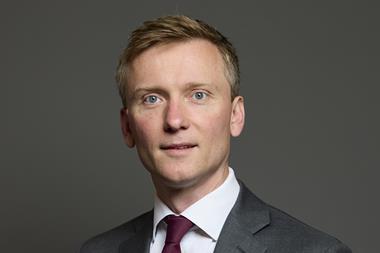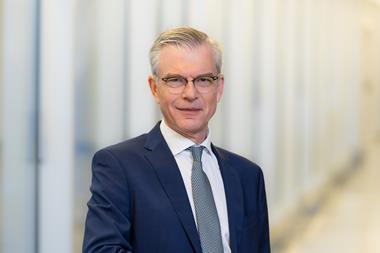A law has been drafted allowing Spain’s reserve fund to invest in equities. But, as George Coats finds, its details and timescale are still unknown
Co-operation across party-political lines is rare in Spain, but pensions is an exception, according to Guillermo Ezcurra, who is responsible for the employee benefits programme arm at the March UNIPSA group, a subsidiary of Banca March, and a partner at independent actuarial consultancy Aserplan. “What we have in Spain is a political consensus, and the consensus is to ignore the pensions problem.”
But there have been more positive approaches. In the mid-1990s all political parties and the social partners signed up to the Toledo Pact which, among other things, initiated parametric reforms by changing the calculation basis for the state old age pension, introduced automatic inflation-proofing of state pensions and created a social security reserve fund - the Fondo de Reserva de la Seguridad Social - to guarantee the short-term payment of state pensions when the system tips into deficit.
“The reserve fund began in 2002 under a [conservative] Popular Party government,” says Andrés Martín at Mercer in Madrid. “Contributions come from the surplus generated by the social security fund. The contribution the first year was €600,000 and this year it is €4bn. The fund has assets of €50bn. At the time the impact that immigration into Spain would have on social security contributions was not realised. But nevertheless we need this kind of fund. If the social structure does not change we will have to start taking money out of the reserve fund in 2020.”
“Immigration has improved the situation,” says Sebastián Larraza Sola, a partner responsible for institutional clients at Madrid-based consultancy International Financial Analysts (AFI). “It means more people working and making contributions. But this will not be the case in 15 years. “
“Currently it invests only in fixed income, in government bonds from Germany, Poland, France and Spain,” says Martín. “And the return is fairly low. It was about 3% last year and sometimes it is less than the inflation rate. Bonds are not enough; they can’t give you more returns than inflation and for the long-term. Of course you have to beat inflation but this is not the objective, it is a restriction; you must have higher returns. So the government decided to look at what other European states have done with their reserve funds. And it has talked to us. We have done a workshop and given them the example of Ireland, Chile, the Nordic countries and so on. We pointed out that the reserve fund has a long-term investment horizon, it has long-term assets. It has to manage the risk but it has to diversify into all kinds of assets. They were not surprised, of course, but they are under political and public pressures because they see it in terms of risks to social security money.”
“We must be the only country - apart from the US - where a reserve fund has been invested 100% in bonds since its inception and not in equity, private equity and hedge funds,” adds Larraza. “However, the law on how to manage the assets is now being amended.”
At the moment we are restricted to public debt,” says Javier Aibar Bernad, general director of the Social Security Treasury which oversees the reserve fund. “We have a draft law that makes our investment policy more flexible. But it doesn’t just say that we should widen our investments to include equities. While equities are included among the new asset classes it says that we have a wide universe to invest in and there are other asset classes included in that universe. Specifically, the draft law fixes the investment principles, the asset classes in which the reserve fund is allowed to invest and the limits to diversify the risk. The investment criteria also note that the reserve fund should avoid having a significant influence in any one organisation. For that purpose, it should take social, economic, and environment principles into account. However, we are in a period of change but we are just at the beginning.”
“The government’s hope was that the law would pass before the next election,” says Manuel Alvarez, head of pensions and personal life insurance plans at Caser. “But [under the Toledo Pact] the government must have the agreement of the other political parties on questions related to social security, and because we are in the pre-electoral time this is not perhaps the time to make an agreement with the Popular Party.”
“Elections are due in March so probably the law will not come before the election,” says Martín. “A draft law was released in June but it was opposed by the Popular Party which felt it did not guarantee transparency and because pensions are so sensitive that the reserve fund is a very delicate issue. So now we anticipate seeing the law in June next year … maybe.”
But the draft did not go into detail. “It is a simple law, just 12 articles,” says Martín. “It outlines the concepts of a more diversified approach but does not go any further. I think the first step will be the passing of the law, then they will go deeper into it when they begin the process of regulating it.”
“All the providers are waiting to see what the government is going to do because although there are a lot of rumours nobody knows exactly,” says Jaime Sánchez-Cano Torres, director of pensions Endesa. “So we are waiting. We only know they are going to do it; we don’t know how, when or with whom.”
“Last year the people managing the fund discussed opening its investment to other markets and other asset classes,” says Ezcurra. “It was on its agenda for this year to contact international asset managers for part of the portfolio, not a big percentage, something like 20% or 30%, but nevertheless a lot of money, approximately €10bn.”
What impact will the reserve fund’s new direction have on the rest of the pensions and institutional investment industry in Spain?
“Theoretically it should increase the range of products and investment styles because, for example, alternative investments - hedge funds, private equity, funds of funds, real estate funds - should be 10% of its portfolio in standard terms,” says Martín. “But I think it’s going take a long time to reach this.”
But could it have a more immediate impact playing, for example, a similar role to France’s FRR and introduce the investment community to new ways of investing, new products and new styles so that while they may not adopt them immediately they at least enter the investment vocabulary?
“I think so, especially as we have a more open and liberal economy than France,” says Alvarez. “The bill is interesting because it will change our point of view. Our second and third pillars are weak and the reserve fund is more or less the same size, or even a little bigger, than the total private pension sector. Consequently, I think it will fix some rules that could have a direct impact on the managers of private pension plans and be a useful reference for pension plans, especially the occupational pension plans for medium and small companies and encourage them to invest in shares.”
“The reserve fund will give a challenge, it will give a benchmark, because so far pension funds have only been interested in beating inflation,” says Iñigo Bilbao-Goyoaga at AXA IM. “But if the reserve fund changes its focus and goes into performance and wants to put even only 10% into equity, this will be challenging as well for the rest of the players. It is going to give a push to the industry and I anticipate that there are going to be people following its example. So yes, if the reserve fund movement emulates what has been seen in France it could be very good, especially for the first and second pillars. And we are looking forward to that because so far the focus for people like me, the asset managers in this country, has been on the retail area.
“But as an asset manager I still have a lot of questions about how the reserve fund will distribute the money, how this 10% will be split and how the reserve fund will handle it. The results obtained by the local IBEX have raised questions about where the money of the reserve fund should go. I cannot imagine that with the results delivered by IBEX over recent years that it will not give at least 40% of the equity allocation to IBEX or to local players.”
Larraza agrees it will be a challenge and sees potential dangers. “There is a big gap between the Spanish pension fund investment community and asset managers and the international community,” he says. “So the domestic players will have to change the way they manage because they have everything to lose if they go to a public evaluation of managers, they will not get money. Maybe the fund’s Spanish equity allocation will go to Spanish players because they have local knowledge and analysts and the needed resources, but not for Europe, Japan emerging markets, UK or US. There they don’t have the resources to compete.”












No comments yet